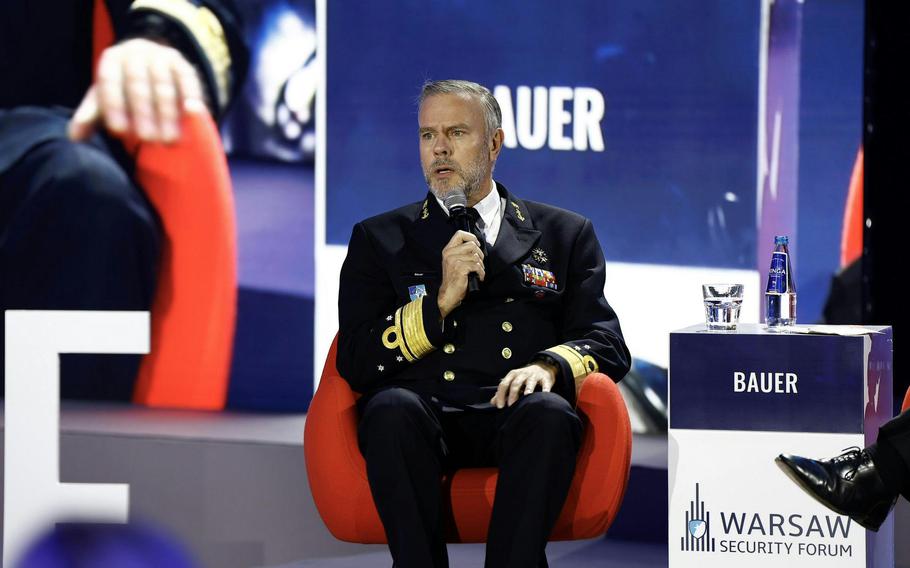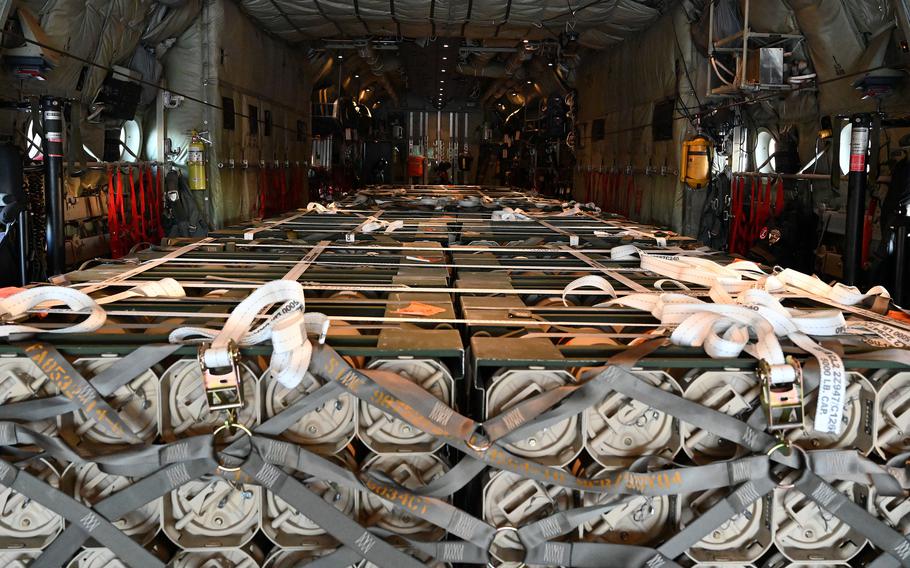
Dutch Adm. Rob Bauer, head of NATO’s Military Committee, said Oct. 3, 2023, in reference to allied weapons stockpiles that the bottom of the barrel is now visible. He said industry will need to ramp up production to keep the flow of arms to Ukraine moving. (Twitter/Admiral Rob Bauer)
NATO member militaries are running out of weaponry to give to Ukraine, a top officer in the alliance said this week, cautioning that industry will need to ramp up production if the West wants to keep the arms flowing.
“The bottom of the barrel is now visible,” Dutch Adm. Rob Bauer, head of NATO’s Military Committee, said Tuesday during a panel discussion at the Warsaw Security Forum.
Bauer said allied countries need “large volumes” of weapons and that a “just-enough” industrial model built over decades does not work when it comes to fighting a war.
“We give away weapons systems to Ukraine, which is great, and ammunition, but not from full warehouses,” he said.
Bauer’s comments come at a critical time in the war, as Ukraine makes slow progress in its counteroffensive against Russia.
Given Ukraine’s dependence on Western arms, the outcome of the war ultimately hinges on the ability of the U.S. and other allies to continue the support.

NATO allies' weapons stockpiles have reached the bottom of the barrel and urgently need to be replenished to keep up military aid to Ukraine, Dutch Adm. Rob Bauer said at a security forum Oct. 3, 2023. (Emma Quirk/U.S. Air Force)
Now, there are new political uncertainties in connection with Western aid. In the U.S., a budget dispute resulted in a 45-day stopgap spending bill, which averted a government shutdown this week but also dropped support for Ukraine.
On Sunday, President Joe Biden sought to reassure Ukraine that support will continue, but it remains unclear how that will play out in Congress.
“I can reassure (Ukraine) we’ll get there, that we’re going to get it done,” Biden said.
On Tuesday, he held a call with numerous allied leaders to reinforce U.S. commitment to Ukraine. Following that call, NATO Secretary-General Jens Stoltenberg reiterated that “we are all committed to supporting Ukraine for as long as it takes.”
But as the war drags on, there are indications that public support is wavering in some parts of the alliance.
The election in Slovakia over the weekend of pro-Russia prime minister candidate Robert Fico, who campaigned on the message “not a single round” for Ukraine, highlights some of the potential difficulties ahead.
Andrew Michta, director of the Scowcroft Strategy Initiative at the Atlantic Council think tank, said Tuesday at the forum in Warsaw that leaders must communicate the urgency of maintaining aid to their respective publics if support is to be maintained.
“Without U.S. capacity, Ukraine won’t stay stable for long,” Michta said. “All hands on deck, spend the money, build the capacity. This is the wake-up call for us.”